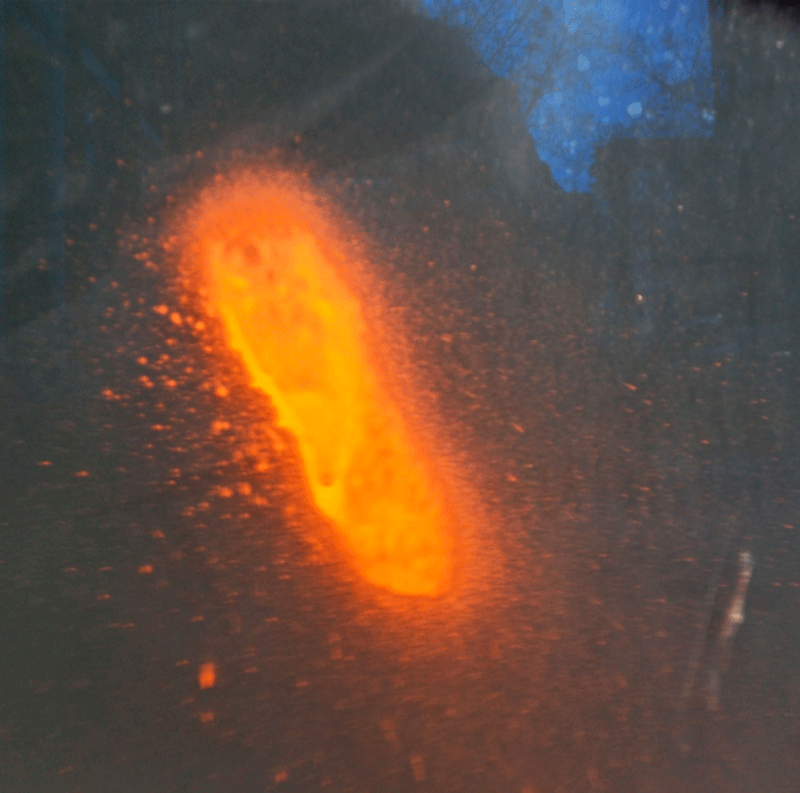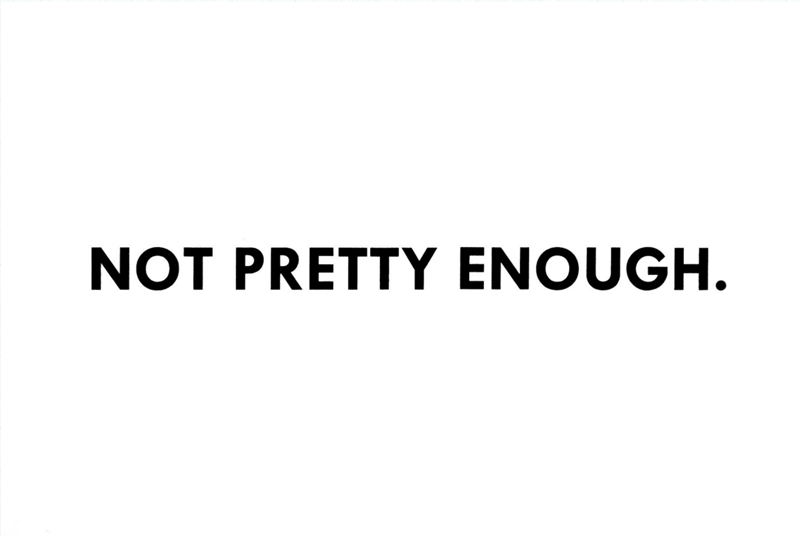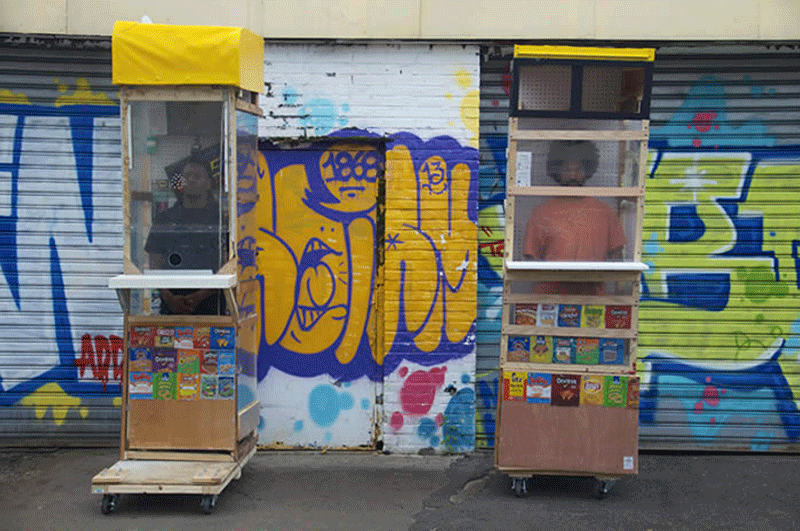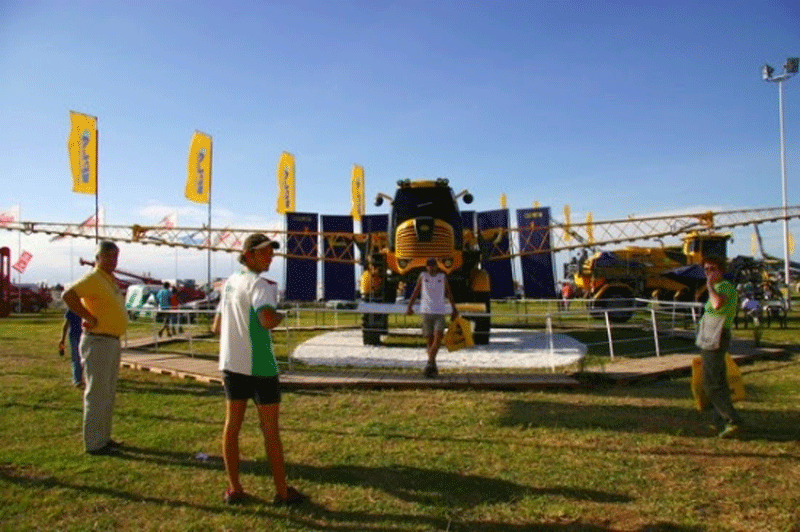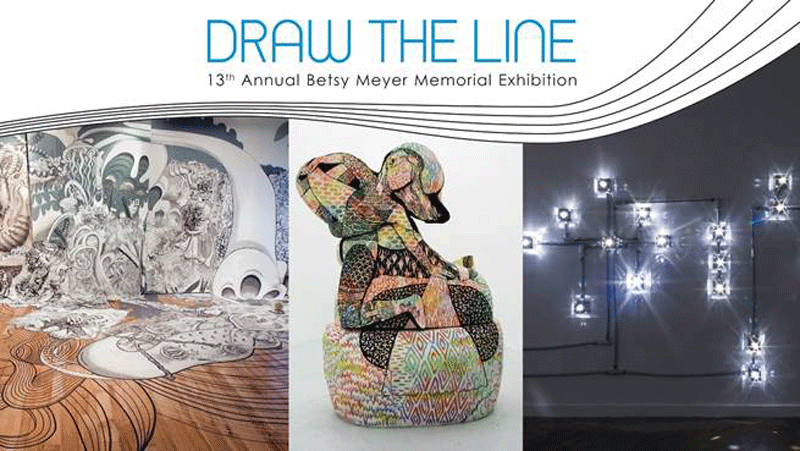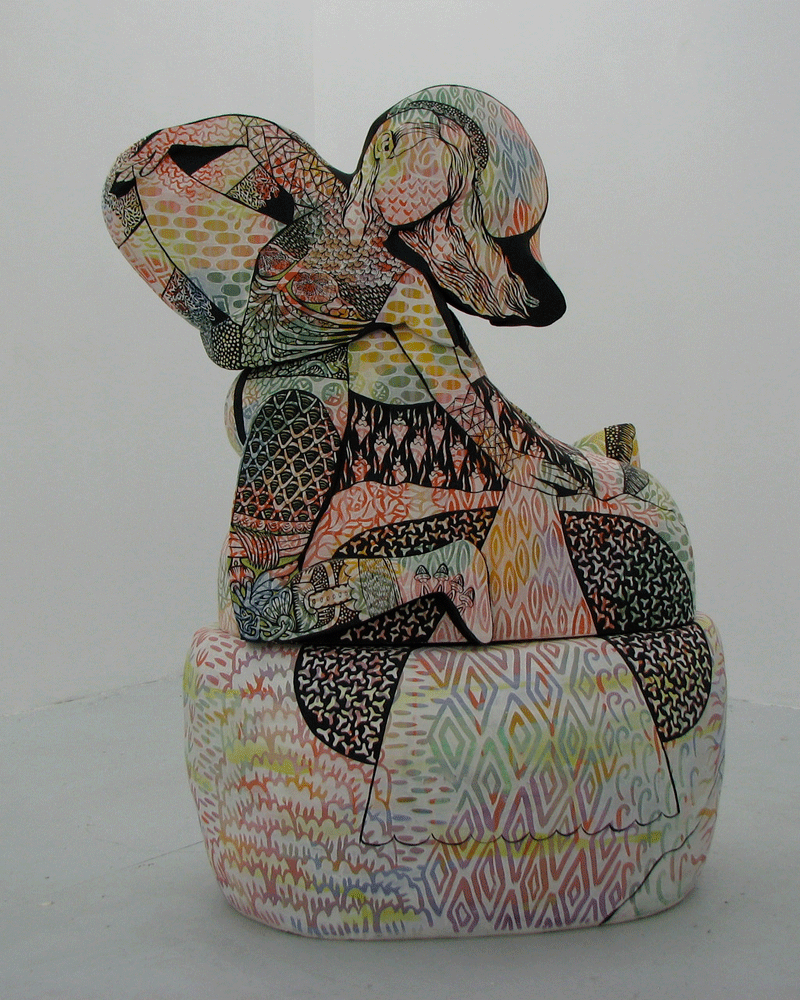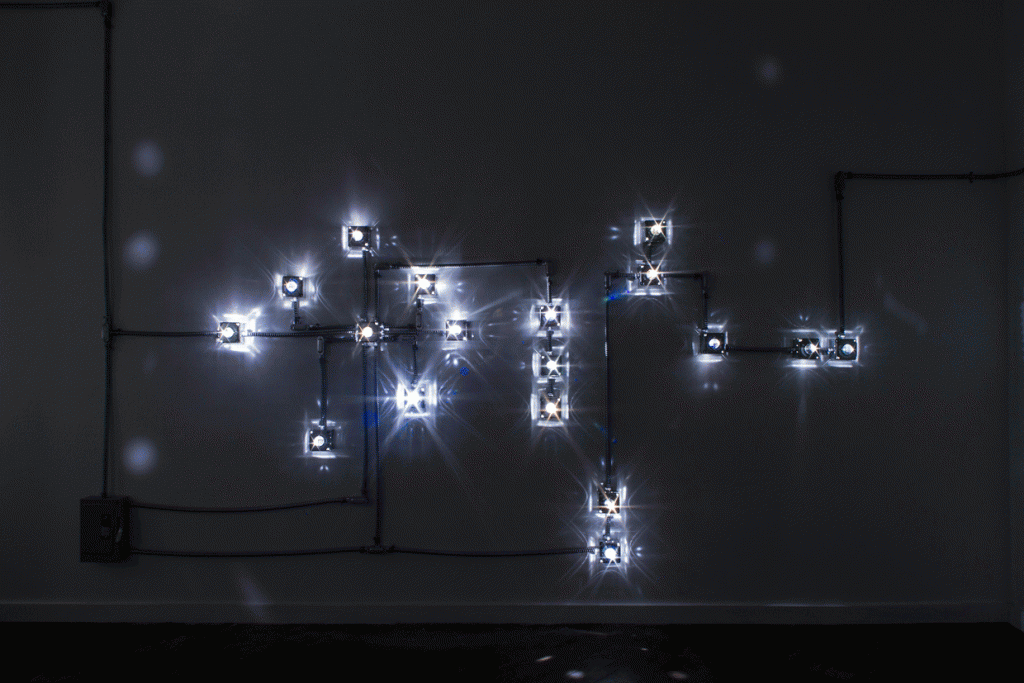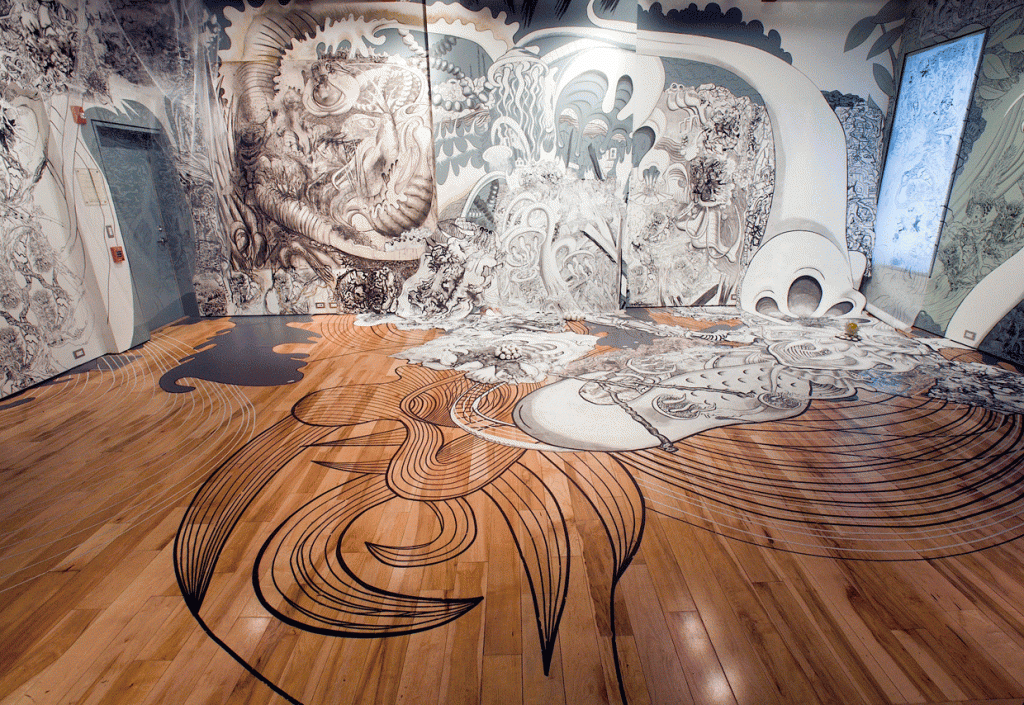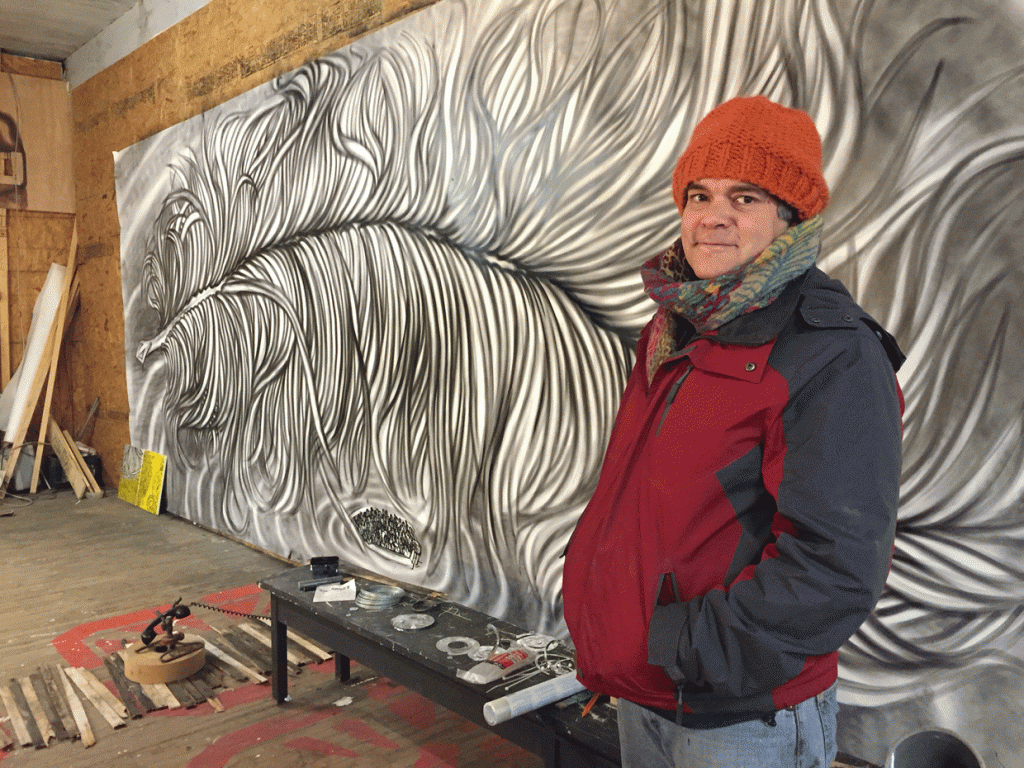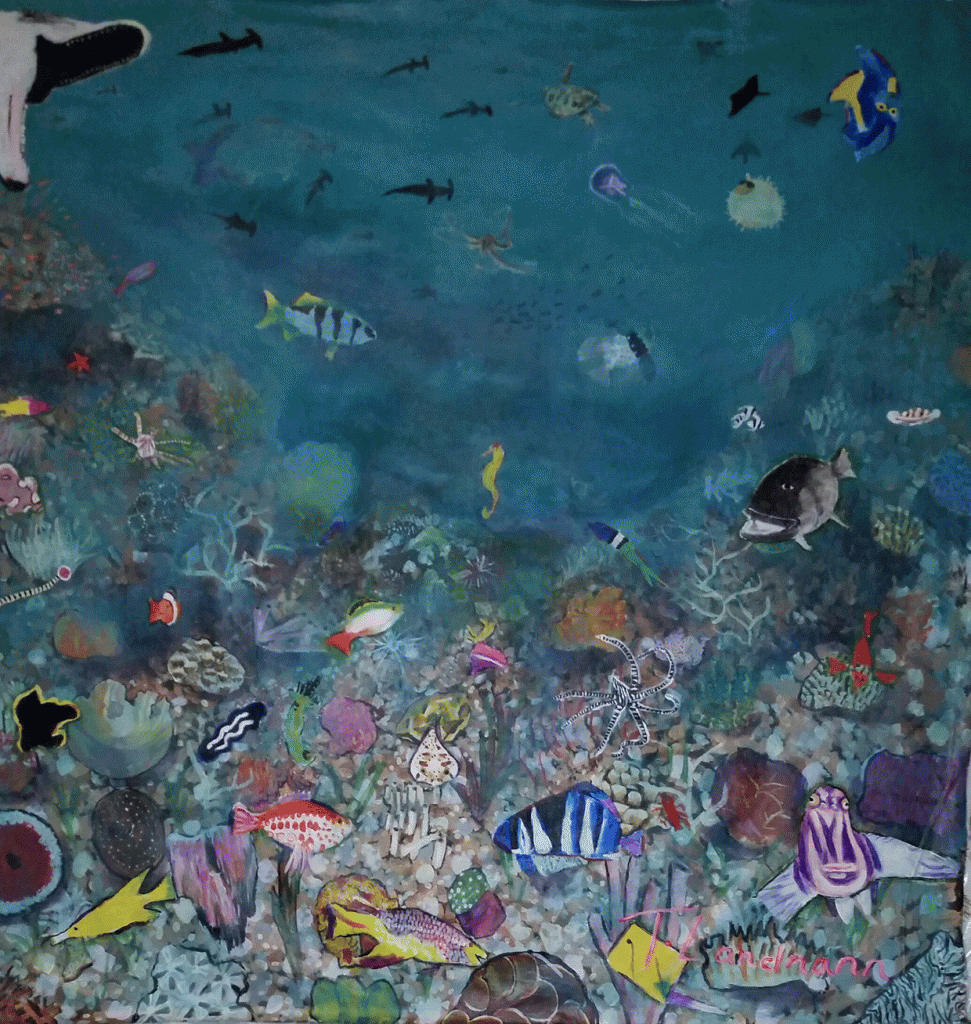 Buddy’s Reef, acrylic on canvas, 6′ x 6′, Tracey Landmann
Buddy’s Reef, acrylic on canvas, 6′ x 6′, Tracey Landmann
The Evolution of Art as a Powerful Resource: The GoBabyGo! University of Delaware Murals
by Tracey Landmann
I am at The Philadelphia Sketch Club tonight to discuss the three-dimensional environments, or “movable murals” I painted for the GoBabyGo! Program, the headquarters of which are the Pediatric Mobility Lab on the University of Delaware’s STAR Campus. These three paintings, however, are only prototypes for their future potential, which is what I am going to write about. The idea I present is not a new one, exactly, but it is one whose fulfillment is growing increasingly more important as our culture both escalates and deteriorates, wreaking data overload havoc. I believe artists can teach the vulnerable among us to control their reactions to that cacophony. I only realized the extent of the power art (and its creators) has in the social service sector while I was working on these murals. I will explain.
GoBabyGo is a program that provides independent physical, and therefore social and developmental, mobility for people whose movement is limited by physical disability. There are two sides to GoBabyGo!, the pediatric part, in which toddlers receive their own battery-powered cars specially adapted to work with their abilities (while combating their disabilities) in their own homes and nearby surroundings, and there is also an portion whereby a harness system, which enables people (adults and children) to traverse pathways in buildings by means of poles bolted into ceiling from which a “harness” (supportive vest) on a pulley hangs. This is also useful in a limited physical setting. My idea was to not only put a colorful patch over the ugly, boring gray of a pediatric rehabilitation setting, but also to enlarge cognitive range with an ‘assistive technology’ that will never lose battery power or enable mobility only with a suspended framework.
What I have done so far has been has been for GBG’s pediatric side: I decided to use the unlimited mobility of imagination to enhance the restricted kind provided by the adapted cars. Theoretically, the paintings would stimulate the previously stationary children, now able to maneuver independent of an adult transporter, to go toward the murals; motivate them to reach out for the new environments (they are intended to hang at tiny person eye level), and wonder what might lie in and beyond them. They could make up stories, play pretend – in other words, imagine any number of things about the amazing new places they would see, and be able to reach. All of the animals in the murals are named and described as to species, but their stories are up to the children. The kids are not fed pre-fab fiction from a cartoon or toy conglomerate. My dream for the murals is that their use would both set the program apart from those of its type, giving it an extra “edge” to entice potential funders, and inspire GBG founder/director Dr. Cole Galloway to better address the cognitive development needs of the children he serves. My bigger dreams are that the dozens of chapters of GoBabyGo! world wide, the University of Delaware’s physical therapy team, and especially, the caregivers of mobility-impaired children, will see the value of my ideas and duplicate my actions. I suppose you could say I’m planting an already cultivated field to ripen my own vision, but at least the ensuing harvest is for others. Unfortunately, as far as I know, my seeds have not yet been able to sprout very well.
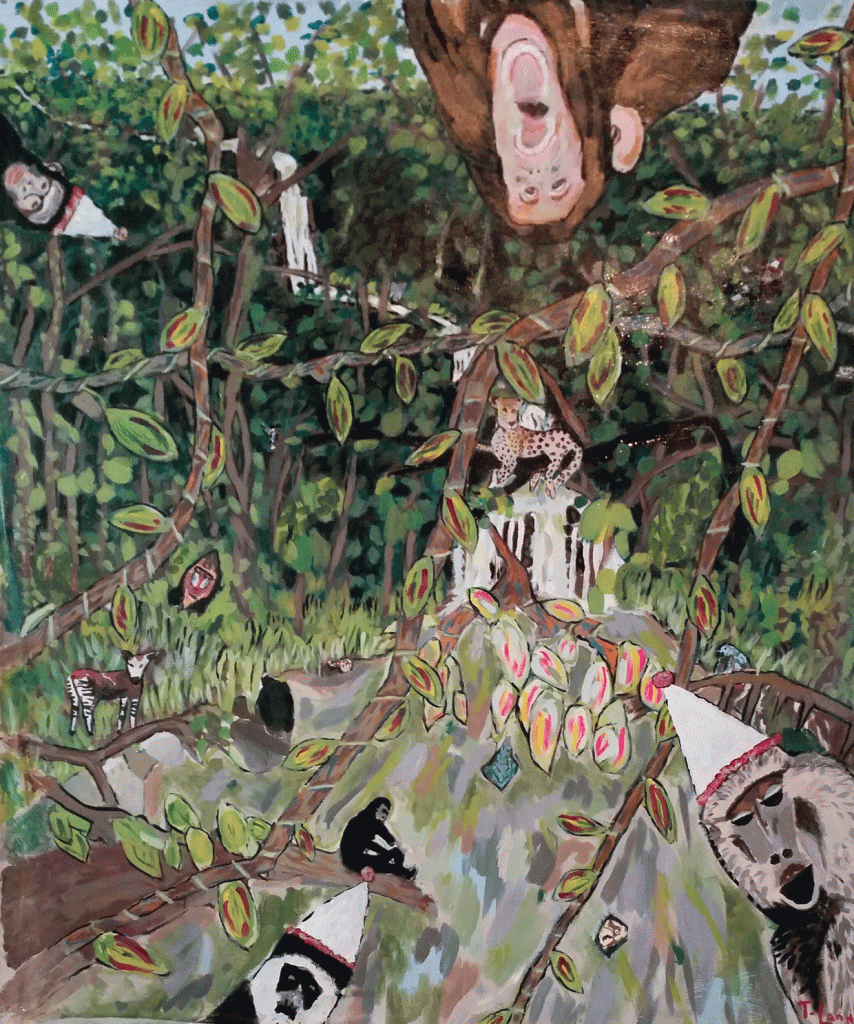 Welcome to the Jungle, acrylic on canvas, 6′ x 6′, Tracey Landmann
Welcome to the Jungle, acrylic on canvas, 6′ x 6′, Tracey Landmann
Growth will be far more likely when the murals are displayed in a more visible location, exhibited in GBG workshops, shown in the program’s promotional materials, and especially, are used as the base for lot more sensory stimulation in GBG’s new lab-to-be. This seems like a very complex plant, I know, but it didn’t begin that way.
At first, I wanted to do this because Cole Galloway had been incredibly supportive of the art program I designed for the Brain Injury Association of Delaware. I couldn’t do much to show my appreciation, but Cole likes my work, so I decided I would produce some of it (but more kid-friendly) for his Pediatric Mobility Lab. It took me several months to figure out the most effective way to do that; it began when he asked me simply to come in and paint stuff – do whatever I want – but told me they, of course, had no money to make it happen. I don’t think he realized that painting with skill takes a lot of time and costly materials, and considering my commitment level to both art and to cognitive rehabilitation, I’m not one to slap on paint just for fun in a therapy environment. It needs to be beneficial, and benefit requires a lot of thought. When I finally figured out how I could best add to the program’s impact, I was sure I could convince the Delaware Division of the Arts to fund the project (and I did – in part), which would not only pay for materials for me, but introduce Cole to a new grant source for future GBG creative endeavors. And so: the mural project started off pretty simply, but soon meant a lot more to me.
The deeper motivations behind the project idea – why I would go to such extremes for GoBabyGo! – came into sharper focus as I designed and painted. I had a lot of time to think while working. I realized I wanted to paint the murals because I am very conscious of the disadvantages individuals with disabilities have, and how its members are far more limited if they can’t overcompensate for those deficits and social barrier than if they have the figurative tools to do so. Even more than the average person, most people with physical and/or mental impairments must be adaptable to the potential scenarios and circumstances that may present themselves in the future. Come to think of it, everyone facing an excess of difficulties in any sense is better off if he or she can consider many options.
A person who is flexible is one who is able to view situations from many different perspectives, as well as capable of applying learned knowledge. That person needs to organize and prioritize life’s tasks, and be in control of his or her own existence. Flexibility of perception and imagination is vital. Although I can’t magically imbue anyone with wisdom, I am certain creating three dimensional environments will not only stimulate children to explore physical mobility potential by providing hints of what is ’out there,’ but could conceivably enable anyone to consider the possibilities of ‘out there’ in a broader sense.
My project goals really evolved. In doing the murals for GoBabyGo!, I set out to address what I felt to be Cole’s needs for his program – making the murals light and portable, creating a background to motivate toddlers to move – but for the toddlers, whose future life requirements are not the main priority for a physical therapy program created to lower a few fences for a few years, it turned out I wanted my work to reach much farther.
Right now, we who have the gift of creativity might want to think about examining the goals we have for our artistic power, and reach farther, too. The externally provided routes to resources needed to successfully guide life, always elusive (at best), are growing extremely scarce as those whom society marginalizes are shoved aside, and as their demands to raise their Quality of Life expectations grow more insistent.
Today’s service environment for members of vulnerable populations is bad and getting worse as the fundamentals of democracy. Education and social programs are shriveling, and many are becoming less concerned for their neighbors because their attention is forcibly redirected toward potential danger to their own survival. Now more than ever before, we must work together to strengthen our weakest communities, in order to keep the voting majority able to make the decisions to both maintain social stability and allow for progress. At present, that so-called majority is being manipulated into attacking itself. The divisions between those with literal and figurative wealth and those who are resource-poor is growing, and the resource-rich – inevitably the ones in positions of power – often spur that growth by steering those of us in the middle in disorienting circles. We need to fortify ourselves by being aware, and enlightening those in the dark.
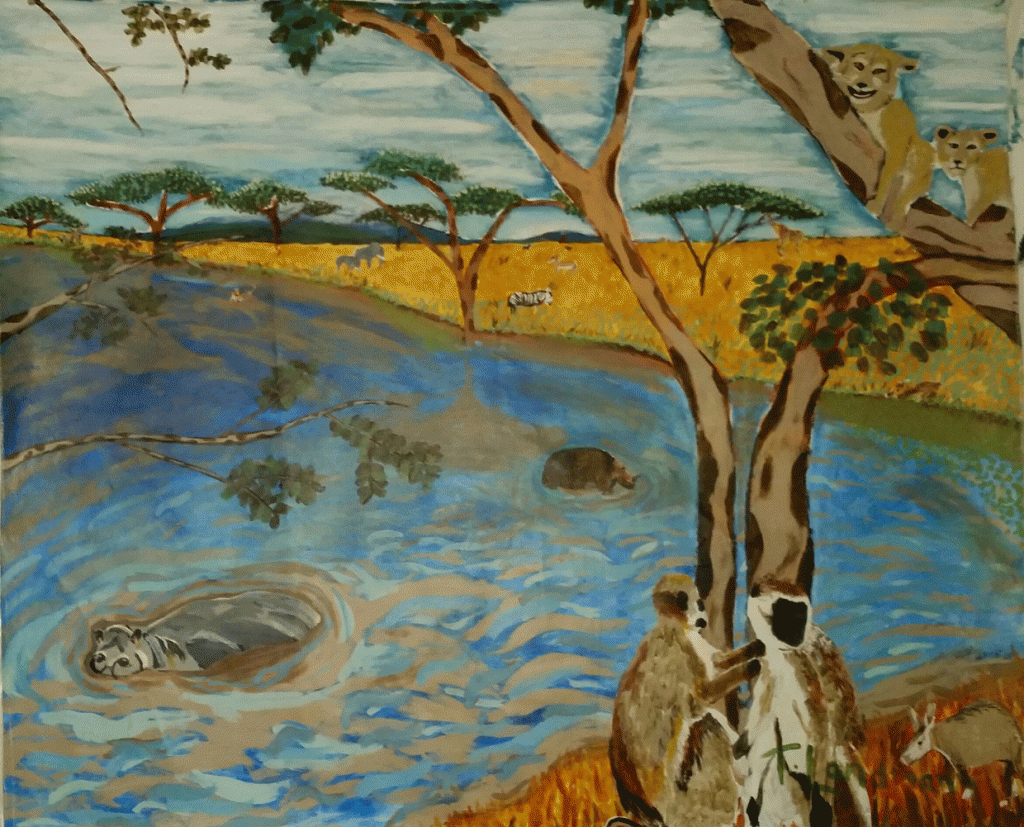 Vincent on Safari, acrylic on canvas, 6′ x 8′, Tracey Landmann
Vincent on Safari, acrylic on canvas, 6′ x 8′, Tracey Landmann
As artists, we despair: we mount protest shows, we join in marches, we use our art to tell the world of our feelings about) the current state of events BUT WHAT CAN WE DO BESIDES VOICE OUR OWN DISCONTENT? How can we control any of it? What special quality do we have that can help keep the canyon dividing the Withs from the Withouts from widening?
We can share our self-preservation, our therapy, our own secure base –ART – with the people who see their roads to the future as dead ends. It isn’t an easy fix, but we can help. Our most significant strength is for the youth; it is much simpler to establish a broad boulevard in an open space than it is to widen a narrow road in an overpopulated city. We can literally expand environments and alter thought patterns for the juvenile members of disadvantaged groups before mental pathways become set. The self-awareness, ability to balance composition and prioritize focus that our own creativity brings to us can be shared with others in the form of – not just art instruction, but – sensory environments. We can create worlds in empty spaces – worlds that provoke thought, imagination, and a million different possibilities. We can bring brightness, light, refreshing sounds, pleasing textures, delicious tastes and aroma, or at least the suggestions of all those, via visual stimulation to people who’ve given up on looking for pathways, or at least never were allowed the malleability of mind required to seek them. Our biggest potential contribution to society is our power to encourage mental agility.
If more of our disenfranchised groups, and especially, more children (who have largely been deprived of creative pursuits, and consequently, ability to foster analytic skill), are encouraged to think outside the boxes those who wish to retain control have created for them, perhaps the artists will be the ones who can kick-start the “Make America Great Again” process. I don’t see anyone else doing it right now.
Thank you to Tracey Landmann for the content of this post.
(302) 383-0698
For more information on GoBabyGo!: http://sites.udel.edu/gobabygo/
Like UD GoBabyGo! on facebook
SEO and Photoshop by DoN.
Like DoNArTNeWs Philadelphia Art News Blog on facebook
Follow the new DoNArTNeWs.com
Follow DoN on Twitter @DoNNieBeat58
@donniebeat on Instagram
Affiliate Marketing [disclosure page] Shop on-line and help support DoNArTNeWs

